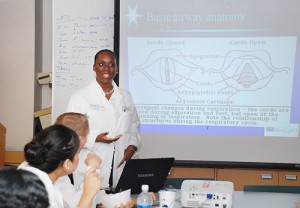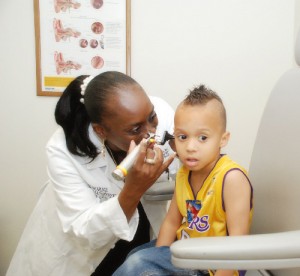- New Sublingual Allergy Tablets - October 31, 2014
- Ground-breaking New Treatment Option for Sleep Apnea - September 27, 2014
- Allergies versus Viruses in Children - September 27, 2014
- “Dog Dust” Protects Children from Allergies - September 27, 2014
- Nasal Saline Irrigation - August 8, 2014
- Doctor, I am Allergic to Dust. What Can I do? - July 31, 2014
- Infants Exposed to Dust Mites Less Likely to Develop Allergies - June 23, 2014
- How to Treat a Young Child’s Cough - December 17, 2013
- Many Parents are Unaware That Their Children Are at Risk for Noise Induced Hearing Loss - December 9, 2013
- Is it a Cold or an Ear Infection? - December 9, 2013

Question: My teenage daughter is constantly listening to music using headphones. Sometimes it is loud enough that I can even hear the music if I am standing close to her. She is also on the phone a lot. Recently, she has recently been complaining of hearing a high pitched ringing in her ears, especially after going out to a concert or a party with loud music. Should I be concerned that she is damaging her hearing permanently?
Discussion:
The ear is a very sensitive organ and unfortunately, when it is damaged, it cannot be fixed. Over time, repeated temporary injuries (i.e., loud noise exposure at a concert) may result in permanent hearing loss or tinnitus (ringing in the ears).
Listening to music at high volumes through head phones can cause hearing loss. There is an increase of ear bud and headphone use among children and especially teenagers. Many teenagers listen to their music for hours. While it is considered safe to listen at a sound intensity of less than 85 dB, many people listen at levels much higher than this. Further, it is difficult to know how loud your headphones are playing music.
 When music is delivered at the safe 85 dB through headphones, the volume is loud but they are still able to hear a conversation in the room. Often people are using their music to drown out environmental noise such as conversations, so the volume far exceeds 85 dB. The headphones themselves are not protective, as the max level through most headphones is 105 dB and may be as high as 120 db in some insert headphones. This is as loud as a jet engine during take-off.
When music is delivered at the safe 85 dB through headphones, the volume is loud but they are still able to hear a conversation in the room. Often people are using their music to drown out environmental noise such as conversations, so the volume far exceeds 85 dB. The headphones themselves are not protective, as the max level through most headphones is 105 dB and may be as high as 120 db in some insert headphones. This is as loud as a jet engine during take-off.
Damage can occur from any exposure to loud noise, not just headphones. Often, we are not aware of how loud we are listening to music. A good example of this occurs when we get back into the car and start the engine. We are often startled by how loud the music is, though when we were in the car before, we were listening to it at that volume. Our ears actually quiet some of the sound as a protective measure but we continue to turn up the volume to hear the music over the noise of traffic or because we have the windows down. In reality, we are subjecting our ears to a louder sound intensity than is safe or comfortable.
The complaints below may indicate your teenager has hearing loss:
- Inability to hear you easily
- Your speech sounds muffled to them
- Frequently misunderstanding what you are saying
- Tinnitus (ringing in the ears)
Is there a compromise for your teenager between enjoying their music and protecting their ears?
Usually, it is safe to listen to their headphones at 60% of maximum volume for 1 hour. An iPad software update is also available with a “volume limit feature.” Another quick check is if other people can hear the music when headphones are on, then it is too loud. Noise-cancelling headphones reduce external noise, allowing your child to turn down their headphone volume. Custom ear molds for headphones achieve the same goal. When attending any music concert, your teenager should wear ear plugs. Rock concerts or symphony orchestra registers at 110 dB.
If you have concerns about your child’s hearing, you should have them seen by a pediatric otolaryngologist who will evaluate your child and provide safe advice for hearing protection.



